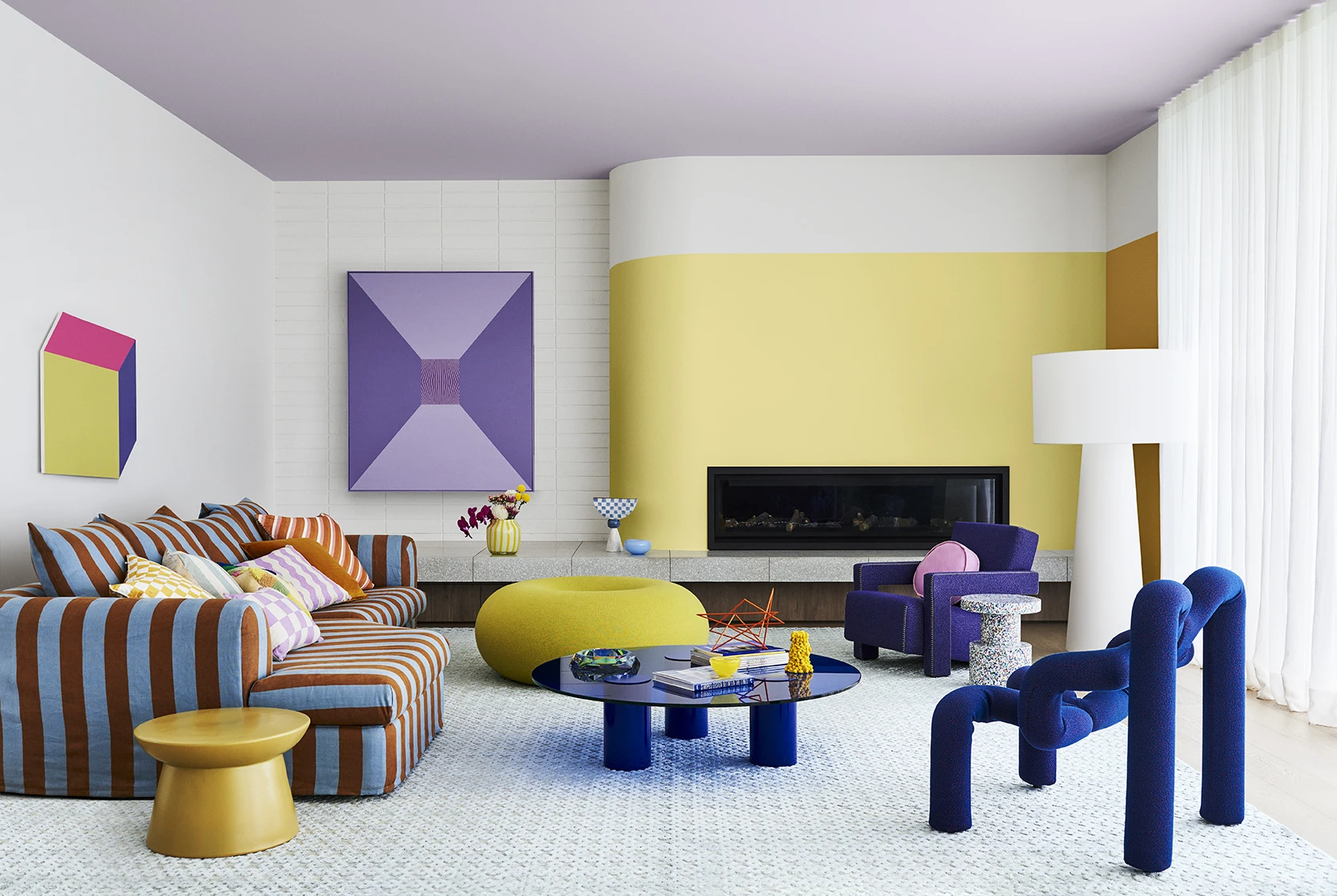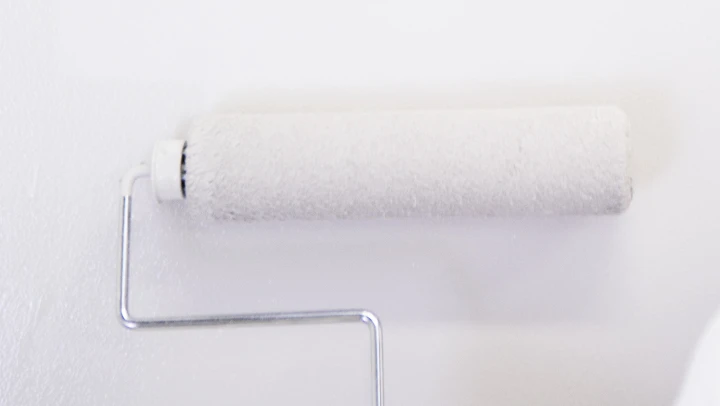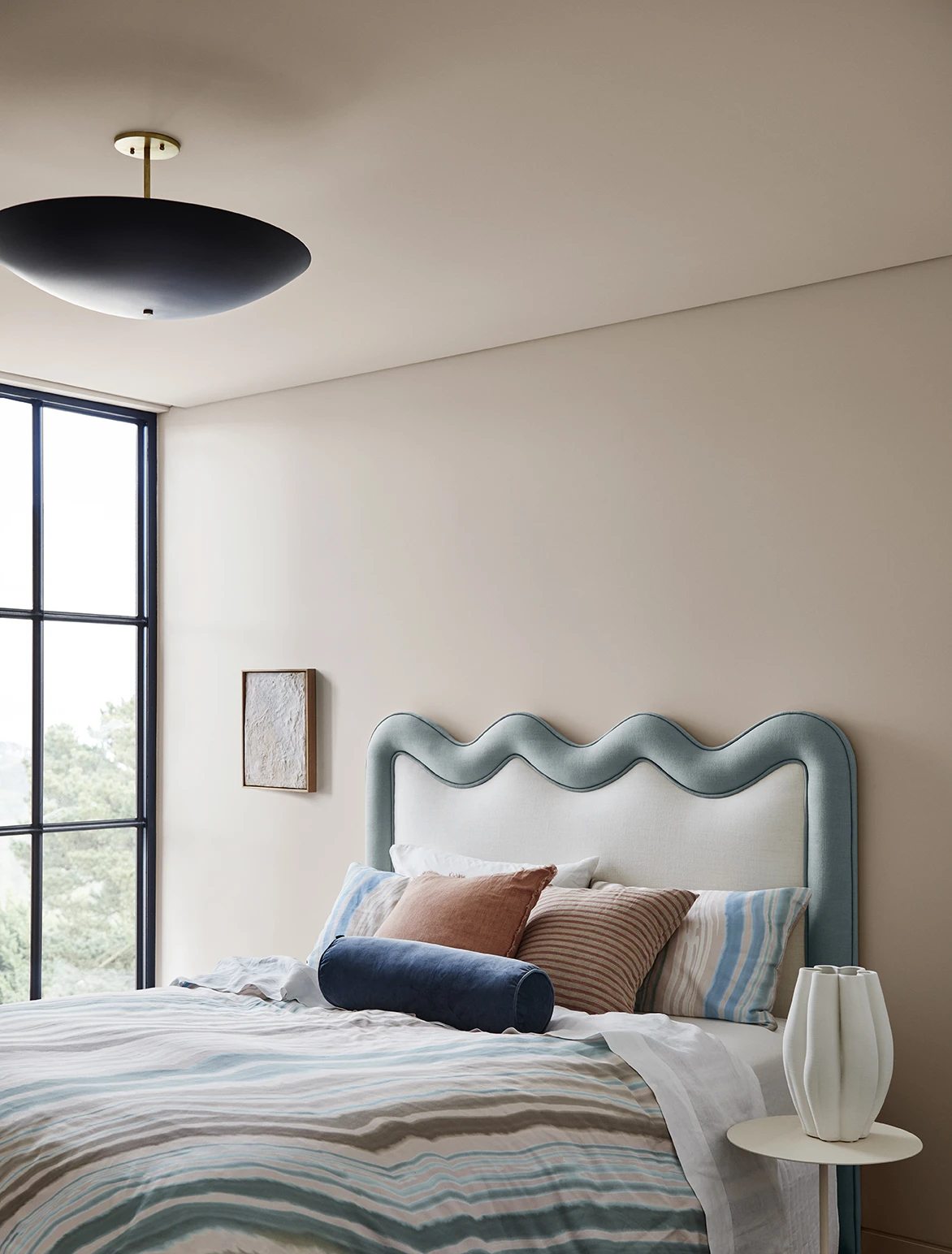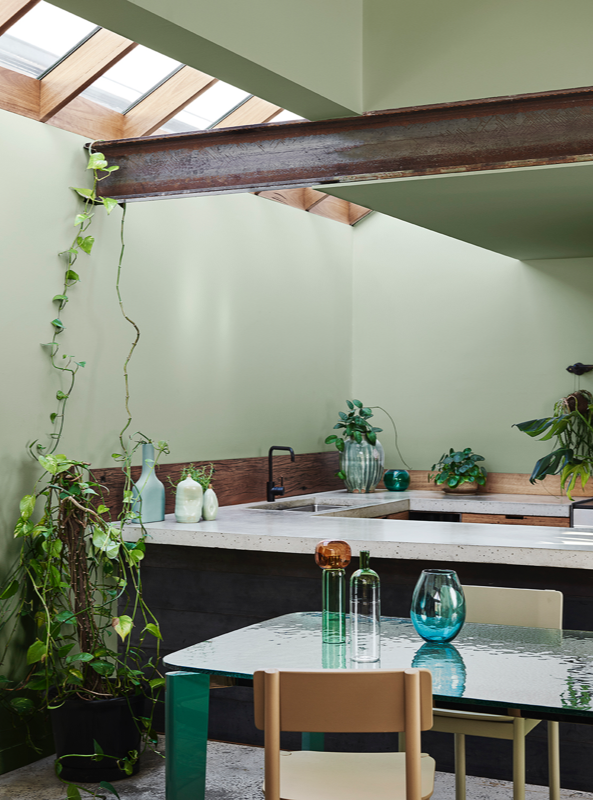
Refresh your ceiling
Painting your ceiling is the fastest way to lighten and brighten a room. When it comes to choosing a ceiling paint, there are a couple of important things to consider. Is the room in a damp area of the house? Is the room prone to mould? How many coats do you want to paint? Dulux colours featured: Remuera (ceiling and wall), Gentle Annie (beams) and St Bathans (wall).
Follow 3 easy steps to get you started.
Ceilings refresh project ideas
Dulux Ceiling White is perfect for living rooms, bedrooms and hallways. It has a mould resistant formula with a five-year guarantee against mould, and is low odour and low VOC.
Dulux Ceiling White +PLUS Kitchen&Bathroom is suitable for the whole home, particularly damp areas such as bathrooms, kitchens and laundries. It gives one coat cover over light colours, and has a mould resistant formula with a ten-year guarantee against mould.
Ceiling Refresh

Wall
Ōkārito
Ōkārito is a crisp, fresh white that goes with almost anything. It is perfect as a main wall colour for exteriors as well as windows and trims. Ōkārito is a versatile white that suits almost any style of home. It is also the most popular white in the Dulux Colours of New Zealand range.

Wall
Manorburn Quarter
Manorburn Quarter is a very subtle warm white. It is a great neutral white that can be used as a main wall colour, trim or an exterior colour. Manorburn Quarter works well with a wide range of other colours including Manorburn, Greytown, Haast and Maraetai Quarter.
Time to paint
You're ready to paint. Follow these steps to get the best result.

Follow the preparation
First step is to follow the preparation steps in the prep guide.

Cutting in
Just like a wall, begin by cutting in where the roller won’t reach. Using a brush, paint around downlights and edges to create a border. Cut in small areas at a time to ensure when you eventually paint with a roller, it’s still wet and will blend smoothly.

Load roller
Once you’ve loaded your roller evenly with paint, begin in one corner and move fluidly in a parallel motion. For best results, work in one metre sections painting across and then down. Roll as far into the previously brushed sections as possible for best results.

Laying off
Now that you’ve finished a large section of your ceiling, and while it’s still damp, you can begin laying off the paint. This is a crucial step in achieving a smooth and consistent finish. Using an unloaded roller begin in the top left corner of your ceiling and gently pull towards you in a straight line with no pressure. A lightness of touch will prevent new brush strokes from forming. Repeat this action, only this time, slightly overlap your last movement so your roller rubs away the line created by the previous stroke.

Repeat
Allow the first coat to dry and repeat the total process again with a second coat if required.
Admire
Lastly, stand back and admire your handy work. Well done!
Here's what you'll need to get started:
Tools & Accessories
Undercoat/stain blocker (if required)
Paint pot – for cutting in
Roller tray
Roller extension pole

The clean look of a white and neutral colour scheme can help open up the space in your bedroom. Adding warm neutral hues can make the space feel more inviting, while cool neutrals can add layers and depth inside your home.

Brown and grey are both neutral colours, so they naturally pair together in a room. Grey is a versatile colour that adds a soft and serene touch while earthy brown tones can bring a sense of cosiness and warmth to the room.

Sitting next to each other on the colour wheel, green and blue work together to create a harmonious scheme. Both naturally calming and relaxing colours, this palette can help turn your bedroom into a space that is perfect for rest and rejuvenation.

A feature wall is a great way to add a bit of colour and personality to the room. When choosing your wall, consider your space as a whole to find the best focal point. Avoid choosing a wall with windows that give the room it’s natural light, as these two focal points may clash.


